The best solution for laying stoves and fireplaces!
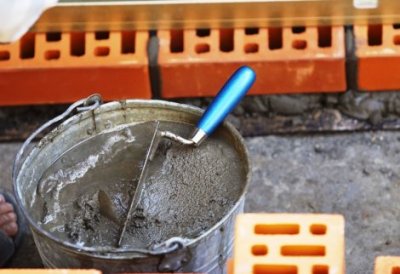
Despite the wide range of modern heating equipment, many people prefer to use a stove, made by hand.
This way it is possible save on utility bills, and the most important thing is that the stove creates the desired microclimate at any time.
Today's masonry does not have an archaic appearance; the stove can fit perfectly into any interior.
The main point in choosing a stove or fireplace is the mortar for masonry. This is important, since the quality of the masonry mixture depends not only on reliability of the future design, but also proper functioning of the structure.
Requirements for masonry composition
For classic russian stove a solution was used that took into account the combination of heat resistance, increased heat capacity and a coefficient of thermal expansion equal to that of brick. Such a solution was made based on fatty clay.
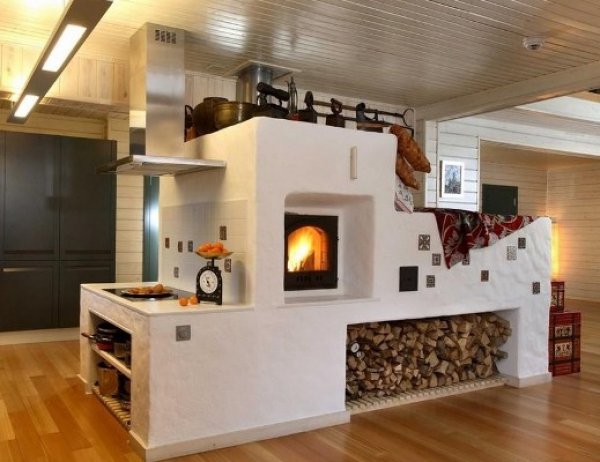
Photo 1. Classic Russian wood-burning stove. Equipped with a wood-shelf and a place for cooking.
Nowadays they are sold dry ready mixes, certain types of clay, other substances used in masonry. Construction and repair with their help is simplified. But not all ready-made building mixtures initially have the necessary characteristics, such as:
- fire resistance;
- heat resistance;
- gas tightness.
Refractory mixtures are either heat-resistant, or to heat-resistant compounds that are adapted to long-term contact with fire and can withstand the action of chemically active components contained in the products of thermal decomposition of fuel.
A material that can withstand heat is called heat-resistant. heating to maximum temperature, while he retains its strength. Its structure and shape do not change after cooling. Fireclay bricks are heat-resistant materials, for example. Clay is a must in a heat-resistant solution.
Gas tightness should be high. Flue gases will not pass through the seams, but at the same time the finished mixture allows moisture to pass through, that is, the stove "breathes".
Types of heat-resistant mortars for laying a brick oven
The choice of composition for the work can be made based on the masonry of a certain component part future construction. To optimize all the functions of the stove or fireplace, it is better use different solutions: for the foundation, for the heating part, for the reinforced concrete base (“cushion”).
When working on the arrangement chimney the requirements for heat resistance and fire resistance are slightly reduced, plastering other types of mixtures are used. In masonry compositions may include the following substances:
- clay;
- sand;
- cement;
- asbestos;
- gypsum;
- lime;
- table salt.
The components can be mixed with each other and added to them modifying substances, plasticizers.
Clay
Centuries ago, when building a Russian stove, it was necessary to take into account that the walls of the structure would be exposed to heat during operation. high thermal load. Since then, nothing has changed, this remains an important condition. And one of the materials that exhibits positive properties, which is not only a binding component, but also a plasticizer, is ordinary clay.
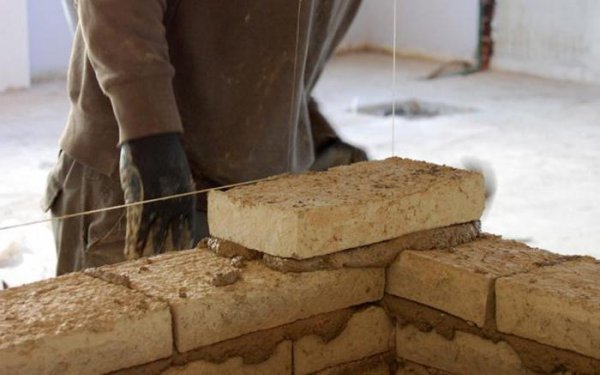
Photo 2. Clay mortar applied to the bricks used to build the stove.
The masonry composition was made by hand and had to have the following properties: fat content, viscosity and thickness. Therefore, the clay used was fat and carefully sifted, calcined river sand and ordinary clean water were added to it. After drying, the composition cracked, the cracks were sealed with a lean or medium solution.
The masonry composition based on fine-grained sedimentary rock is divided into three types based on consistency:
- fatty (the most flexible);
- skinny (least plastic);
- average.
The peculiarity is that a solution with increased fat content can crack after drying, while a lean one can crumble. For laying modern stoves or fireplaces, it is used normal (average) solution.
The unique properties of clay are that it acquires high strength after firing, provides adhesion to the structure and is resistant to extremely high temperatures. Clay is used to make fire-resistant ceramic and clinker bricks.
If the mixture is prepared entirely by hand, it must include the optimal ratio of all components. The composition will be as follows:
- sifted clay;
- washed and sifted sand;
- clean water.
Most often, in the work on the arrangement of the furnace, it is used clay-sand mortar. The simplest composition can also be used, which includes water and clay taken in equal proportions. They can fluctuate in one direction or another depending on the type of clay.
To make the optimal solution, you will need to conduct some experiments with clay, so it will be clear how plastic it is. To do this, you need to take approximately five samples of material. Add sand to the first sample in the amount of 10% from the amount of clay, to the second - 25%, to the third - 75%, to the fourth - equal parts sand and clay, and leave the fifth sample unchanged.
Add water to each mixture and mix thoroughly until creamy consistency, then lower a wooden board into each one. If the composition is ideal, it will remain on the wooden surface in a layer of thickness no more than 2 mm.
Reference. You can add regular salt to the mixture for greater strength.
If the clay does not hold at all, then it is a non-plastic composition, and it not suitable. Too thick a layer of the mixture, sticking to the board, indicates superplasticity, which is also not an ideal characteristic for work.
You can buy sand for the composition or stock up on it yourself. When buying, you need to give preference to lake or mountain views. To prepare the extracted sand, it must be sifted from large fractions. If it contains organic substances, the sand also needs to be washed.
Important. When using a purchased solution, you need to mix as much clay as you can use. for one hour of work.
Clay can also be used to lay bricks around a metal stove.
Fireclay
This is a solution based on a mixture quartz sand And ground fireclay. Its parameters will be the same as those of a regular clay solution, namely:
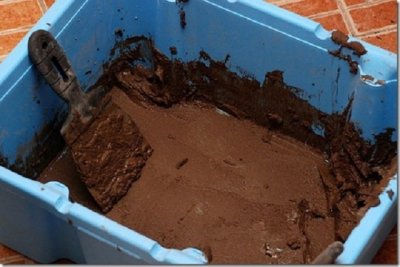
- absolute fire resistance;
- maximum gas tightness;
- unsuitability for masonry outdoors;
- suitability unlimited time;
- dryness, restores all properties after wetting.
One parameter will differ - this is the heat resistance indicator. In fireclay mortar it is higher, approximately 1200-1300 degrees. For laying chimney and creations combustion zone what is needed is a clay-chamotte mortar. It is prepared in the ratio 1 to 1 (fireclay and clay), ¼ water from the mass of clay.
Important! The mixture with fire-resistant clay in the composition can be used for cladding, but not earlier than after 4 weeks since the beginning of intensive operation of the furnace.
Lime
There are compositions that can replace clay ones, but they are used for certain design components:
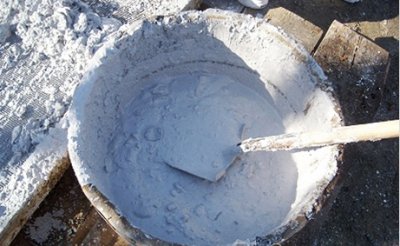
- chimney;
- first rows of masonry;
- monolithic foundation;
- pipe.
A mixture with lime is prepared for plastering of stoves, but is also used when laying foundations, chimneys, pipes above the roof, that is, for those components of the building that will not be heated more than 450—500 °C.
The strength of the composition made from slaked lime is higher than that of clay, but gas density is lower. Such material can be used outdoors. The composition has good moisture resistance, increased mechanical strength, resistance to smoke transmission.
Attention! Quicklime is not used in the compositions, as it leads to breaking fresh masonry due to the peculiarities of the interaction of this component with water.
Cement. Which stove mix is better?
Cement-sand or lime-cement mortar is used to arrange the bottom of the firebox, the foundation, pipes above the roof, leveling surfaces, it is used to fill seams. The composition differs high strength And rapid solidification.
Important! Cement-sand mortar does not “breathe” and has poor tolerance to high temperatures.
The composition with cement is very strong, and depending on the additive (lime or chamotte) it will have low or high heat resistance. A mixture of cement and slaked lime allows the composition to be used in the construction of a foundation in damp places. For chimneys it will not have the appropriate heat resistance, its thermal stability no more than 250 °C.
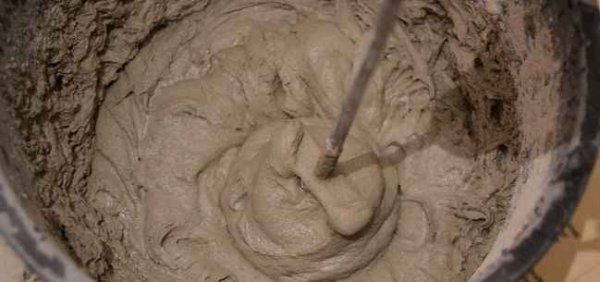
Photo 3. Mixing cement-sand mortar with a construction mixer. A similar mixture is usually used to fill the foundation of a stove or lay out a chimney.
Cement with the addition of chamotte is resistant to temperature, about 1300 °C, it does not allow flue gases to pass through and allows condensate to escape. The mixture is heat-resistant and fireproof, but is more expensive than a clay mixture.
Reference. The best mortar for laying the firebox will be clay-chamotte. The mixture must have excellent thermal efficiency to withstand increased thermal loads.
Brick for the stove
Commonly used two types of bricks — this is a fireclay or ceramic refractory brick. If the stove is built in a bathhouse, then fireclay brick is no longer suitable, and is used ceramic refractory And clinker.
The design can be divided into components as follows:
- foundation;
- cladding;
- firebox;
- chimney;
- smoke circulation.
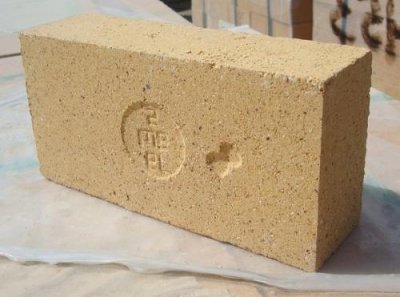
On the foundation First-class brick is needed, clinker is better to use in a region with constant and severe frosts. Lime or cement mortar is suitable in this case, it has good strength.
Herself firebox must be laid out fireclay bricks, a similar solution is used - fireclay.
The smoke circulation is made of fire-resistant bricks, using a composition with clay.
Chimney It is built from grade 1 bricks or clinker bricks in combination with hollow bricks (in places with a harsh climate).
Important! The mortar for laying the chimney must be resistant to the effects of various acids, it is necessary to take into account that its parts are subject to different thermal loads.
For the pipe source, clay-fireclay mortar is recommended. The chimney head and neck are lined with a more durable material with the addition of slaked lime and/or cement.
Solution for a sauna stove
For solutions used in the construction of a brick oven in a bathhouse, the following components are required:
- cement - the ratio of cement to sand 1:3;
- limestone - ratio of sand to lime 2:1;
- lime-cement - lime, sand, cement - 2:1:6-16.
These types of mortar are suitable for arranging the foundation, chimney and other areas; for laying the firebox area, you will need a mixture of clay and fireclay. The stove is plastered with the following compositions:
- lime, sand, asbestos, gypsum;
- clay, asbestos, sand;
- clay, sand, cement, asbestos.
Reference. To place a summer stove in the yard of a summer house, for a barbecue, a mixture of fireproof clay and sand or heat-resistant cement, regular cement and mortar is used.
It is recommended to make a solution for building an outdoor stove on a cement base, especially in high humidity. The ratio of sand and cement 3 to 1.
Ready-made refractory masonry mixtures for stoves and fireplaces
The market offers a wide variety of masonry mortars that are specifically designed for the installation of stoves and fireplaces.
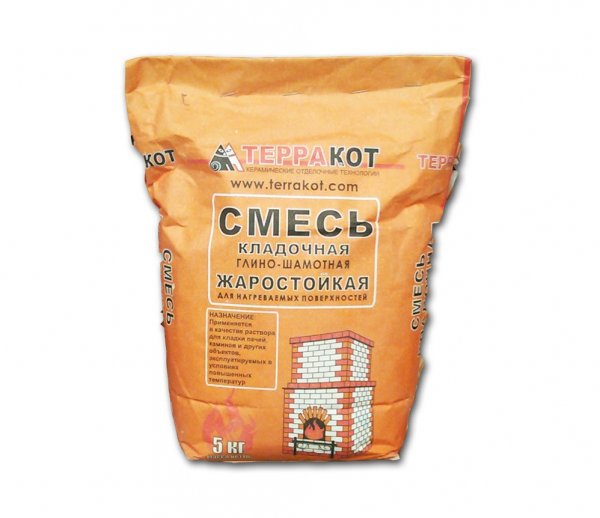
Photo 4. Ready-made dry heat-resistant mixture for laying stoves and fireplaces. Manufacturer "Terracotta".
These mixtures include:
- "Terracotta", the mixture can withstand very high temperatures, up to +1300 °C, waterproof, suitable for ceramic, fireclay bricks. Consists of a mixture of fireclay, sand, clay.
- "The Stove-Maker", masonry mixture, withstands temperatures up to +1350 °C, consists of refractory clay, cement, mineral fillers and modifying additives.
- Furnace mixture "Kostroma" from the Makarovs' Stove House, used in the construction of stoves, fireplaces, barbecues. Heat resistance +750 °C.
- Fireclay "Diana", heat resistance +1600 °C, is used in the construction of saunas, laying stoves and fireplaces. It is considered an ideal solution for stove laying in any heating mode. It can be used for laying tiles on the stove.
Important! The masonry work must be carried out indoors at a temperature from +5 °C.
There are positive aspects to ready-made mixtures, they save time and effort. But they also require compliance with certain rules:
- a mixer is used for mixing;
- do not allow the mixture to harden;
- Operation can only begin after a certain period of time.
The quality of commercial mixtures is often higher than that of hand-made ones, but they are more expensive.
Useful video
Watch the video in which an experienced stove-maker talks about which mortar is best to use for laying brick stoves or fireplaces.









Comments
I was already in despair until a neighbor told me where to get clay. According to him, clay for laying stoves used to be taken only from this ravine and kept for a whole year "weathered" in piles in the open air.
I took his advice and managed to build the stove without any problems. It has been standing for 2 years now and not a single crack.